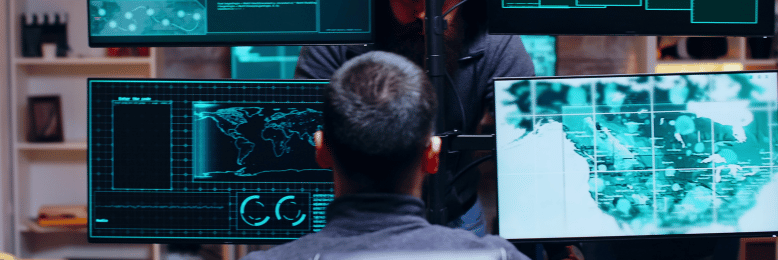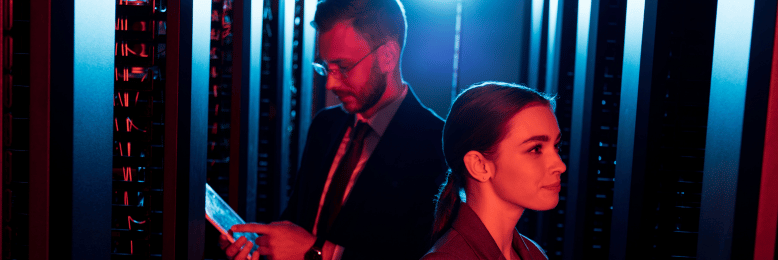What's the Difference Between SOC 1 and SOC 2?
April 10th, 2024 | 5 min. read
.jpg)
If you're reading this, chances are you've encountered a few potential business contracts that have asked you to submit a System and Organization Controls (SOC) compliance report.
But what is a SOC report?
A SOC report is something that you can share with customers and potential business partners to provide transparency into your control environment. That will help establish two things: first, that your organization meets industry standards, and second, that they can trust you with their data.
The problem is that there are two types of SOC reports: SOC 1 and SOC 2. If you're unfamiliar with the nuances between the two, it could cause confusion, making the compliance process take longer. That means you could be missing out on potential contracts.
Our team at Intelligent Technical Solutions (ITS) has helped hundreds of businesses meet their compliance goals, including SOC audits. In this article, we'll demystify the:
Reading this article will empower you to navigate the SOC compliance process confidently.
What is SOC 1?

SOC 1 is an audit report that assesses the internal controls over financial reporting (ICFR) of a service organization. In other words, it looks at how well your company handles financial information.
A SOC 1 report is typically requested by other companies or organizations that rely on the audited company's services. This is to ensure their financial data is accurate and secure. So, if a business is outsourcing tasks like payroll processing or data management, a SOC 1 report helps ensure everything is handled correctly.
What is SOC 2?

Unlike SOC 1, which focuses solely on financial matters, SOC 2 focuses on broader aspects of your business. It's an audit report examining how well a company protects data and keeps its systems available and reliable. The SOC 2 compliance standard is based on up to five Trust Services Criteria, which are:
- Security – Established by restricting access to information through user authorization and is the minimum required trust criteria.
- Availability – Established by ensuring parties who own information have access to it.
- Processing integrity – Established by minimizing flaws in all cybersecurity architecture.
- Confidentiality – Established by taking extra measures to protect unique kinds of data.
- Privacy – Established by paying particular attention to personally identifiable information or PII.
Clients or partners often request a SOC 2 report to ensure their data will be handled securely and with integrity. If your company offers services like cloud computing or stores customer data, having one can help build trust with clients and demonstrate a commitment to protecting their information.
4 Key Differences Between SOC 1 and SOC 2

SOC 1 and SOC 2 reports are both vital tools for assessing and communicating a service organization's internal controls. However, they serve different purposes and are designed for distinct audiences. To get a better understanding of those distinctions, here are the key differences between SOC 1 and SOC 2 reports:
1. Purpose
SOC 1: The scope of a SOC 1 report is limited to controls that directly impact clients' financial statements. It evaluates the effectiveness of controls related to financial reporting processes, such as billing, revenue recognition, and financial statement preparation.
SOC 2: SOC 2 reports, on the other hand, focus on a broader set of controls beyond financial reporting. They assess an organization's controls related to security, availability, processing integrity, confidentiality, and privacy (commonly referred to as the Trust Services Criteria). Technology companies, data centers, cloud service providers, and other entities entrusted with sensitive information typically seek SOC 2 reports.
2. Scope
SOC 1: The scope of a SOC 1 report is limited to controls that directly impact clients' financial statements. It evaluates the effectiveness of controls related to financial reporting processes, such as billing, revenue recognition, and financial statement preparation.
SOC 2: SOC 2 reports have a broader scope, encompassing controls related to security, availability, processing integrity, confidentiality, and privacy. These controls are evaluated based on the organization's adherence to the Trust Services Criteria, which are relevant to the security, availability, processing integrity, confidentiality, and privacy of the systems and data involved.
3. Audience
SOC 1: SOC 1 reports are primarily intended for the management of the service organization being audited, the service organization's user entities, and the independent auditors of the user entities. They provide assurance regarding the controls in place relevant to clients' financial reporting.
SOC 2: SOC 2 reports are typically intended for a broader audience, including current and potential customers, regulators, business partners, and stakeholders concerned with the security and integrity of systems and data. These reports offer assurance regarding the effectiveness of controls related to the Trust Services Criteria.
4. Report Structure
SOC 1: SOC 1 reports follow a standardized format outlined by the American Institute of Certified Public Accountants (AICPA). They include a description of the service organization's system, management's assertion about the system's effectiveness, and the independent auditor's opinion on the fairness of this assertion.
SOC 2: SOC 2 reports also adhere to the AICPA's guidelines but are more flexible in structure. They typically include a description of the system, management's description of the system's controls, an assessment of the controls' effectiveness, and the independent auditor's opinion.
Understanding these differences is crucial for organizations seeking the appropriate SOC report to meet their specific needs and contractual obligations. Whether focusing solely on financial reporting controls (SOC 1) or requiring a broader assessment of security, availability, processing integrity, confidentiality, and privacy controls (SOC 2), selecting the right report ensures alignment with regulatory requirements and assures stakeholders.
Factors to Consider When Choosing Between SOC 1 and SOC 2 Audits

Determining whether you need a SOC 1 or SOC 2 report depends on several factors related to your organization's services, industry, and the specific requirements of your clients or stakeholders. Here are the factors to consider when making a decision:
1. Nature of Your Services
Consider the types of services your business provides. If your services mainly involve financial transactions or reporting, such as payroll processing or accounting services, SOC 1 might be more suitable. However, if your services involve handling sensitive data beyond financial matters, like customer information or proprietary data, SOC 2 may be necessary.
2. Client Requirements
Review any contractual obligations or requests from your clients or partners. They may specify the type of SOC report required for their due diligence process. If your clients operate in industries with strict data security regulations or have specific compliance requirements, they may prefer SOC 2 for its broader scope.
3. Industry Standards
Consider industry standards and best practices relevant to your business sector. Certain industries may have specific regulatory requirements or expectations around data security and privacy. Adhering to these standards may influence your choice of SOC report.
4. Future Growth and Client Needs
Think about your business's growth trajectory and anticipated client needs. Choosing a SOC report that aligns with your long-term goals and the evolving expectations of your clients can save time and resources in the future. Assess whether your services and client base are likely to expand into areas where SOC 2 compliance is more critical.
5. Consultation with Experts
If you're uncertain which SOC report is appropriate for your business, consider consulting with experts such as auditors or compliance advisors. They can provide tailored guidance based on your specific circumstances and industry requirements, helping you make an informed decision.
Ready to Choose Which SOC Report You Need for Your Business?

Understanding the differences between SOC 1 and SOC 2 compliance is essential for businesses seeking to build trust with clients and partners. While SOC 1 focuses on your financial processes and systems, SOC 2 assesses how you handle private data.
If you're still unsure about which SOC report is right for your organization or need assistance with SOC compliance, we're here to help. Our experienced team at ITS has helped numerous organizations achieve their compliance goals, including SOC. Schedule a meeting with our compliance experts. Or you can check out the following resources for more information about matters related to SOC and compliance:
Mark Sheldon Villanueva has over a decade of experience creating engaging content for companies based in Asia, Australia and North America. He has produced all manner of creative content for small local businesses and large multinational corporations that span a wide variety of industries. Mark also used to work as a content team leader for an award-winning digital marketing agency based in Singapore.
Topics:
